July 5th, 2009
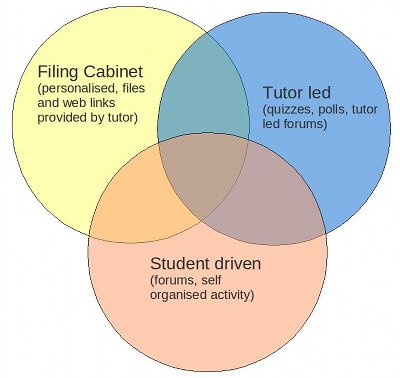
Professor Alan Staley is Head of the Learning Technology Development Unit at BCU. He has introduced Moodle as BCU’s VLE and has used the introduction of a VLE to encourage more active styles of teaching and more focus on pedagogy. I attended a JISC West Midlands Regional Support Centre user group meeting some years ago at which Professor Staley suggested using a simple visual scoring system for teachers to assess the style and degree of interactivity of their Moodle courses. I have cheerfully stolen and adapted this idea for staff development next year.
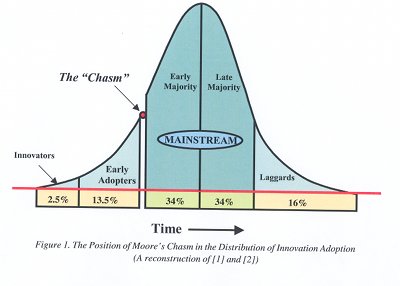
Posted in ILT, a red herring | Tags: elearning, Learning, moodle, policy | Comments Off
July 5th, 2009
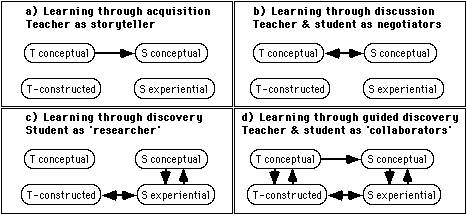
Diana Laurillard is professor of Learning with Digital Technologies at the London Knowledge Lab. Laurillard wrote a very influential book called Rethinking University Teaching, published by Routledge, second edition with updated examples and a few modifications was released in 2001. Roger Rist has provided a brief summary of the conversational model from which I have taken the graphic above. There is a review of the second edition by Stephen Bostock – I’ve linked to the Google cache version as the original is in RTF.
The slide I intend to use on Wednesday is taken from the PowerPoint presentation that Professor Laurillard used for her inaugural lecture at the LKI. The whole presentation is available and worth looking through.
You can also read or listen to Kevin Donovan interviewing Professor Laurillard. I’d be interested to know if you went for the text or the audio. I went straight for the PDF transcript, a colleague instinctively clicked on the audio button.
Posted in ILT, Learning, a red herring | Tags: elearning, Learning, moodle, theory | Comments Off
July 3rd, 2009
“Despite my passion for software I’ve been very interested in being outdoors and blending better my physical presence with the real world. If I could I’d prefer to just spend all my time outdoors; doing work such as annotating the real world with appropriate meta-data.”Anselm Hook’s use this interview
Anselm Hook’s personal site has colour coded rectangles showing recent additions (scroll down a bit). This is taking me back to an old idea (before I started using WordPress),a fridge magnet interface. I need to improve my JavaScript, so watch this space over the summer. The second level linking is simple as well, just pages, no huge archive list. Food for thought.
Posted in Notes | Tags: web | Comments Off
July 2nd, 2009

I’m doing a presentation about Moodle and how we need to broaden use of the communications tools next Wednesday. I’m working to a 20 minute time allowance. I’ll be ‘signposting’ people here at various points as we cross large and complex issues. The Red Herring category will mark those extra bits, cut material, and digressions that could not be pursued. The category will also provide referencing for sources that I use.
The image is actually of the Blueback Herring, and thanks to the authors of the Fishes of New York Web site for providing a high quality image for download. They ask that images be cited as: Kraft D. E., D.M. Carlson, and M. Carlson, Inland Fisheries of New York (Online), Version 4.0, Department of Natural Resources, Cornell University and the New York State Department of Environmental Conservation. They own the copyright of course.
I’ve used the GIMP ‘colourise’ filter with setting of 0 on hue to make this herring red. Yes, I know, Red Herring is actually a kind of kipper.
Posted in a red herring | Tags: Learning, presentation support | Comments Off
June 28th, 2009
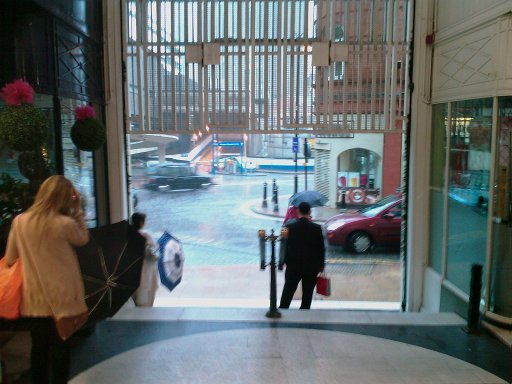
The English Summer is upon us and I’ve been caught in thunderstorms twice. All the classes finish soon and I’m ramping up the staff development. I’ve been thinking about how people will interact with the Internet over the next few years.
I hate to admit it, but the future is probably with small portable devices rather than Web Books. I think there may be a ‘student’ use-case (see comments on the article linked in this paragraph) where a decent screen and day long battery life make a Web book attractive, but people who are not in full time education will be sticking to an enhanced phone for mobile Web. We have enabled the mobile theme for the College Moodle, so that smart phone users can use their small screens to see lesson content and use forums.
Another factor: the laptop manufacturers are moving towards larger screens and heavier machines with higher price tags. The 7 inch Asus EeePC has now been discontinued as has the Elonex One £99 laptop. The difference in cost between some of the fancier Web books and ‘proper’ (larger, heavier) laptops is now quite small.
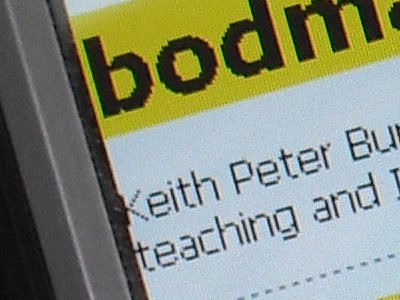
I’m migrating the BODMAS theme over to something that will serve both the mobile needs and look OK on larger devices (this is a work in progress!). I’m also hoping to be able to get a sim card for the tytn phone that I have been lent to use over the summer that allows mobile Internet. The aim is to publish to this Web site, upload photos (the English Summer image at the top of this article was taken on the tytn’s camera), do sound and short video clips from the phone. We’ll see how it goes.
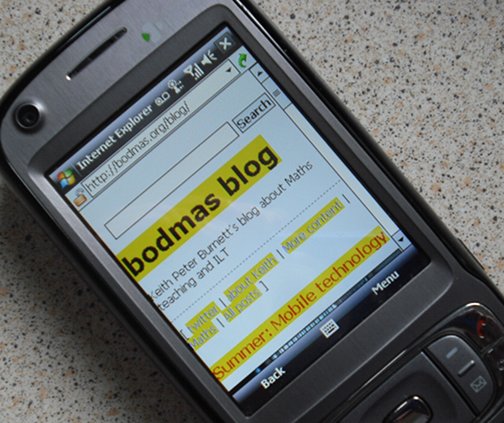
I’ll need to rethink navigation for the site theme, not just use liquid layout and plainer page designs. There is an argument for a very simple landing page for mobile devices that shows the most recent updates, and provides a link to a page with more content and search functions.
Posted in ILT, Notes | Tags: Learning, platforms | Comments Off
June 23rd, 2009
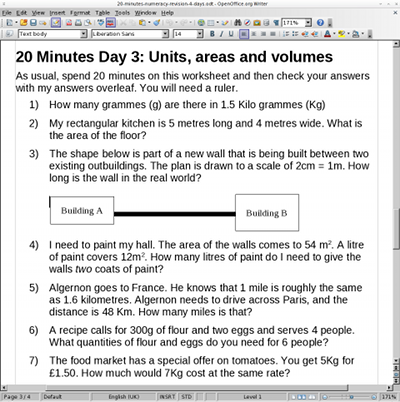
Download a PDF with 48 Numeracy Level 1 questions broken down into 4 ‘days’ worth of homework. Each homework lasts about 20 minutes.
- Whole numbers
- Fractions, decimals and percentages
- Units, areas, volumes
- Money!
You will need to do your own answers until I get near my scanner. I wanted to show standard methods in these questions. I’m thinking of giving homework broken down into 10 or 20 minutes a day next year.
Posted in 20 minutes, Maths | Tags: handouts, Maths | Comments Off
June 12th, 2009
Just a way of looking at Moodle courses that Alan Staley described during a Moodle User Group meeting some time ago. I’ll be working this one up for next year’s technology supported learning course.
Posted in 20 minutes, ILT | Tags: elearning, Learning, moodle, platforms | Comments Off







